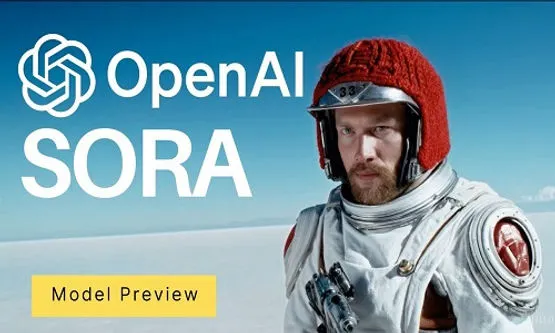Search This Blog
Sadika Media: Your Tech Knowledge Hub Empower yourself with tech insights, tutorials, guides, and courses for all levels. Stay ahead in the ever-evolving tech world with Sadika Media.
Featured post
- Get link
- X
- Other Apps
What is Sora? Unveiling the Revolutionary Text-to-Video AI
What is Sora? Unveiling the Revolutionary Text-to-Video AI
Have you ever wished you could describe a scene and instantly see it come to life in a video? Well, with the advent of OpenAI's Sora, that dream is inching closer to reality. Sora is a groundbreaking text-to-video generative AI model that's transforming the way we create visual content. (Tweet this!)
This blog post dives deep into the world of Sora, exploring its capabilities, potential applications, and the exciting future it holds for video creation. Whether you're a seasoned video editor, a budding content creator, or simply curious about the latest advancements in AI, this post is for you.
From Text Prompts to Vivid Videos: How Does Sora Work?
Sora operates on the principle of understanding and translating written descriptions into video. Here's a breakdown of its core functionality:
- Text Prompts: Users provide Sora with a written description, known as a prompt, detailing the scene they want to be visualized in the video. This prompt can be as specific or creative as you like, allowing for a wide range of video possibilities.
- AI Processing: Once the prompt is received, Sora's AI engine goes to work. It leverages a technique called diffusion models, which essentially involves taking each frame of the video and progressively refining it from static noise into an image that aligns with the prompt description.
- Video Generation: Through this process, Sora generates a video, typically up to 60 seconds long, that visually translates the information provided in the text prompt. The resulting video can include detailed scenes, complex camera movements, and even characters with emotions.
The Power of Imagination Unleashed: Applications of Sora
Sora's ability to generate videos from text descriptions opens doors to a multitude of exciting applications:
- Content Creation Revolution: For creators, Sora offers a new and efficient way to generate video content. Imagine storyboards coming to life or crafting explainer videos with ease. Sora can be a valuable tool for YouTubers, social media marketers, or anyone who wants to create engaging video content.
- Enhanced Prototyping: Product designers and filmmakers can leverage Sora to quickly generate visual prototypes based on their ideas. This can expedite the creative process and allow for faster iteration on concepts.
- Educational Tools: Educators can utilize Sora to create interactive and visually engaging learning experiences. Imagine students describing historical events and seeing them unfold in a video, or generating visualizations of scientific concepts.
- Accessibility and Inclusivity: Sora has the potential to make video creation more accessible. People with physical limitations or those who lack traditional video editing skills can now express themselves through video content.
Beyond the Hype: Challenges and Considerations for Sora
While Sora's potential is undeniable, there are challenges and considerations to keep in mind:
- Stage of Development: Sora is still under development, and its capabilities are constantly being refined. The length and complexity of videos it can generate may increase over time.
- Refining Accuracy and Consistency: Currently, achieving perfect alignment between the text prompt and the generated video can be challenging. As the technology matures, expect improvements in accuracy and consistency.
- Ethical Concerns: The ability to generate realistic videos using AI raises ethical concerns, such as the potential for creating deepfakes or spreading misinformation. OpenAI is actively working on safeguards to mitigate these risks.
A Glimpse into the Future: The Evolving Landscape of Video Creation
Sora represents a significant leap forward in the field of video creation. As AI technology continues to develop, we can expect to see even more innovative applications emerge:
- Seamless Integration with Existing Tools: Imagine using Sora in conjunction with video editing software, allowing creators to refine AI-generated videos and integrate them into existing workflows.
- The Rise of Personalized Content: AI could personalize video content based on user preferences, creating a more immersive and engaging viewing experience.
- Democratization of Video Production: With user-friendly interfaces and wider accessibility, Sora-like tools could empower anyone to become a video creator, fostering a more diverse and dynamic content landscape.
Conclusion: Embracing the Future of Video with Sora
Sora's emergence marks a turning point in how we create and interact with video content. While challenges remain, the potential for this technology is truly transformative. As AI and video creation tools continue to evolve, we can expect a future where imagination transcends limitations, and anyone can bring their visual stories to life with just a few words.
- Get link
- X
- Other Apps
Popular Posts
AI-Powered Fraud Detection How to Protect Your Business
- Get link
- X
- Other Apps
AI-Powered Image Recognition: Applications in the Real World
- Get link
- X
- Other Apps

Comments
Post a Comment